I see the question asked so many times and in so many ways. What is the best wood to use for smoking? What is the best wood to use for smoking (fill in the blank with your favorite food)?
I’m going to shake things up a bit by stating there is no rule book
saying a specific wood must be used with a specific food. There are,
however, some basic things you should know to reduce the risks of
toxicity, damage to your equipment, and overall ruining your barbecue.
Use the wrong hardwood and you can bitter any food you expose to that
wood’s smoke.
Absolutely No Softwoods
Right up front, let me tell you,
only smoke with hardwood. Softwoods or coniferous woods should
never
be used for cooking because they have elevated sap levels and more air
in their cell structure. This causes the wood to burn fast, hot,
produce lots of sparks, and produce unpleasant flavors not ideal for
flavoring foods. Let’s be clear on what a softwood is: pine, redwood,
cedar, fir, spruce, hemlock, larch, cypress.
I realize that cedar has been a popular softwood used for plank
cooking or wrapping foods. If you want to learn more about the risks
associated specifically with cedar,
see my earlier article and learn why you should discontinue this practice.
Meet the North American Hardwoods for what wood to use for smoking
Now, meet the North American Hardwoods! Known as deciduous trees
that produce broad leaves, produce a fruit or a nut, and generally go
dormant in the winter, hardwoods are
the woods to use
for cooking and makeup roughly 40 percent of all trees in the United
States. However, not all hardwoods are created equal when it comes to
flavoring foods. Let’s examine some of the specific hardwoods of North
America. I am referencing our key to the boldness of the wood’s flavor (

= Mild


= Medium



= Strong)
 Alder:
Alder:
Part of the Birch family of hardwoods, Alder is a relatively soft
hardwood of medium density. It is most commonly used to smoke fish but
can be used with mild poultry cuts, pork, vegetables, fruits and spices
for natural wood flavoring/smoking. The flavor profile is mild on our
scale of boldness. Alder provides a neutral coloring to the outer skin
of foods and is the preference for those who like to cold smoke.
 Ash:
Ash:
Ash hardwood is part of the Oleaceae family or olive family of
hardwoods and can be used with any food for natural wood
flavoring/smoking. The flavor profile is on the light side making it
ideal for most any food but in particular, it works great with
wood-fired pizza as it can lose moisture quickly providing for a great
bed of coals. Ash provides a neutral coloring to the outer skin of
foods.
 Aspen:
Aspen:
Considered a lightweight hardwood, Aspen is known to have “wet
pockets” which can lead to some difficulty with using this as a cooking
wood due to its tendency for bacteria development. Variations in
moisture can result in temperature variation during cooking which is
directly opposite the goal when fire cooking.
 Basswood:
Basswood:
This hardwood is known as the preferred wood for carving. It grows
commonly with red oak, white ash, and sugar maple trees. This wood is
soft and light which makes it a quick burner. It does not have any
notable odor or taste which makes it a poor choice as a cooking wood.
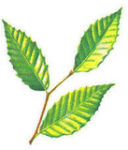 American Beech
American Beech
 :
:
This hardwood grows in large stands and mixes in with many of the
other dominate hardwoods. It is a popular filler wood for making
charcoal so you know it burns long and evenly. It is classified as
moderate in flavor boldness.
 Birchwood:
Birchwood:
This can be an ideal firewood choice due to the prevalence of the
varieties of birch and the strength of the wood itself. However, it is
not a highly flavorful hardwood for cooking and burns too hot. If used
for fire cooking, you will have a challenge controlling the cooking
temperature.
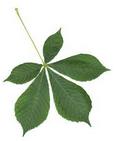 Buckeye:
Buckeye:
This hardwood produces a poisonous nut as well as twigs. For that
reason alone, it is not recommended as a smoking/cooking wood.
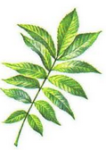 Butternut:
Butternut:


This hardwood belongs to the genus that includes walnut though it is
not as weight-heavy a wood as walnut. Don’t let the name confuse you.
There is no buttery taste to this wood. In fact, it does not offer any
balanced qualities when used for cooking and for that reason, is not
recommended.
 Cherry:
Cherry:
Like Oak, there are many species within the genus of cherry. It has
an obvious fruity aroma and tends to light easily producing a steady
burn and flavor. Wild or forest grown cherry is very different from
orchard cherry which can have bitter undertones which may in part, be
due to the chemical application commonly applied to nursery trees. Feel
free to use it with poultry, beef, pork, lamb, even vegetables, as it
is a workhorse when it comes to flavoring foods. Be sure to use a meat
probe when cooking with cherry wood as this wood provides a reddish-pink
hue to the meat that can easily be mistaken for under-cooking.
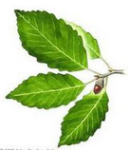 Chestnut:
Chestnut:


This is a very hearty hardwood that is resistive to decay so it is
not necessarily an easy lighting wood. It can be used for smoking
though I certainly feel there are better choices out there.
 Cottonwood:
Cottonwood:
This hardwood is part of the genus that contains the aspens and
poplars. As such, like its siblings, it does not make for a good
smoking wood. In fact, when it becomes wet, it produces a sour odor
which can transfer to food.
 Elm:
Elm:
Although this is a dominant hardwood in the USA it is a hardwood that
has no characteristic odor or taste. For that reason, it does not make
for an ideal cooking wood.
 Gum (Sweetgum):
Gum (Sweetgum):
A very heavy hardwood that holds moisture for indefinite periods of
time which causes it to be a poor choice for pleasant smoke flavors.
This can produce musty aromas that can transmit to foods.
 Hackberry:
Hackberry:
This is a moderately hard wood that has a yellow to grayish heartwood
that does not make it the best choice for smoking. The benefits of
exposing food to this wood are not well documented and for that reason,
is not an ideal choice.
 Hickory/Pecan:
Hickory/Pecan:

Since these hardwoods are part of the same genus they share similar
qualities: dense wood that is strong, can be difficult to lite, but
produce a lot of color and flavor to foods. What should be noted here
is that not all the species are the same. Some hickory varieties are
very bold and can have bitter undertones. It is important to learn the
differences between varieties before selecting one for cooking.
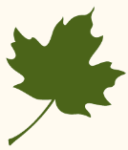 Maple:
Maple:

There are over 120 species of maple so let’s clarify some of the
terms. Sugar maple and black maple are also called hard maple. Silver
maple, red maple, and boxelder are called soft maple. These maples make
for excellent smoking and cooking woods producing beautiful even
coloring and a moderate flavor level.
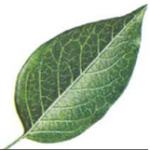 Persimmon:
Persimmon:
This is not a heavily populated hardwood in the USA and it is a slow
grower. It can be confused with Hickory due to similar coloring.
However, it does not produce the same flavors as hickory.
 Poplar:
Poplar:
An extremely light hardwood that does not hold any ideal moisture for
smoldering to produce a clean smoke. Poplar burns too quickly to be an
ideal choice for cooking.
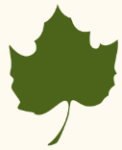 Sycamore:
Sycamore:
Although this hardwood has a medium weight and can burn evenly and
for good length, it does not do anything for coloring foods or adding
any pleasant flavor. For this reason, it is not recommended for
cooking.
 Red Oak:
Red Oak:


The oaks are the one hardwood that worldwide dominates with the
greatest number of species. This is a heavy wood that can be difficult
to light but once it ignites, it produces intense smoke and flavoring
that is easy to distinguish when consuming foods cooked over it. Red
oak has a strong aroma and flavor, requiring a trained hand to use it.
 Walnut:
Walnut:


One of the heaviest hardwoods available, it belongs to the same genus
as hickory and pecan. If classified as smoking, it is on the bold side
and should be used in small quantities. The wood produces a very dark
outer “bark” coloring.
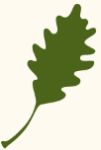 White Oak:
White Oak:


Similar in structure to Red Oak, the white variety tends to be less
strong aromatically though it still produces an obvious bold flavor to
foods. Because it is a heavy, dense wood, it holds moisture for a long
time making it more ideal for hot smoking and grilling rather than for
cold smoke application.
There you have a quick guide on the hardwoods of North America and
those considered ideals for fire cooking. Experiment and keep a written
log of what works with the other ingredients you use in your wood
cooking. Hope you enjoyed our discussion of what wood to use for
smoking!

 Root vegetables have heavy skins and tend to be dirty when first
picked. It is important that you do some cleaning to them to ensure
they are grill and eating ready. First, cut off the stem end with the
greens. You can certainly reserve these for adding to salads or a
smoothie. Also, cut off the pointy end and any loose roots. Now place
them under running water and scrub them clean. Pat them dry and place
on a foil-lined, grill-safe pan. For our recipe, you will only need two
beets but I like to do extras to have for adding to other recipes or
for just snacking on as is. Remember, you’ll see 3-4 beet bulbs per
bunch when you purchase them in the store.
Root vegetables have heavy skins and tend to be dirty when first
picked. It is important that you do some cleaning to them to ensure
they are grill and eating ready. First, cut off the stem end with the
greens. You can certainly reserve these for adding to salads or a
smoothie. Also, cut off the pointy end and any loose roots. Now place
them under running water and scrub them clean. Pat them dry and place
on a foil-lined, grill-safe pan. For our recipe, you will only need two
beets but I like to do extras to have for adding to other recipes or
for just snacking on as is. Remember, you’ll see 3-4 beet bulbs per
bunch when you purchase them in the store.




